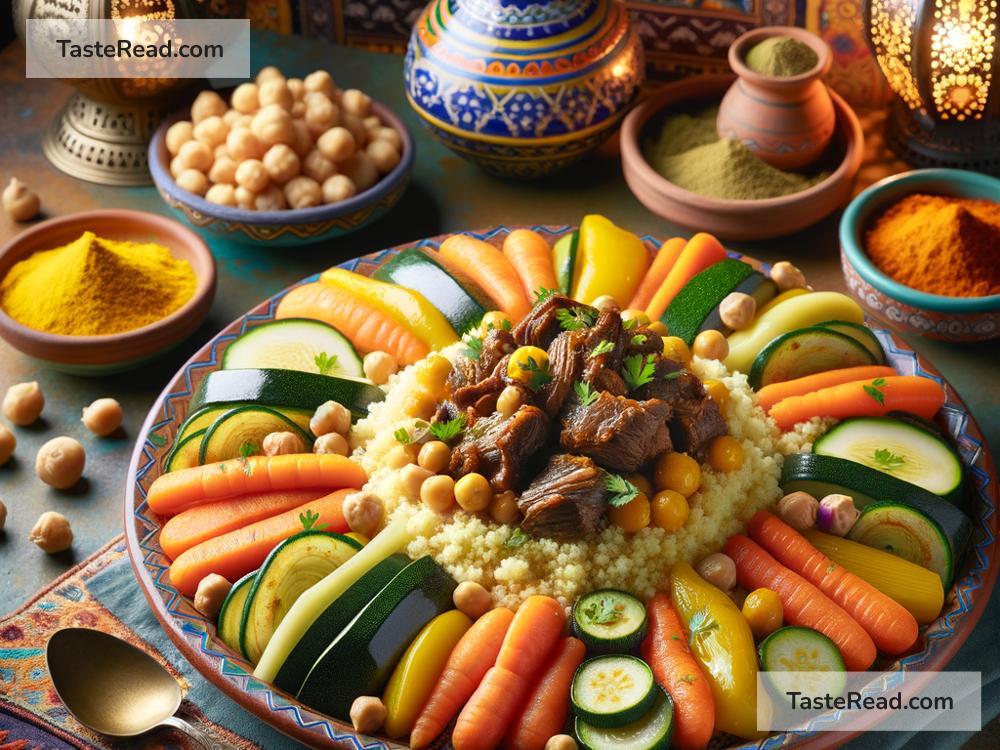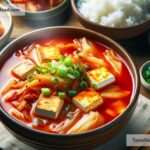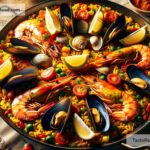The Story of Moroccan Couscous
Moroccan couscous is one of the most famous and beloved dishes in Moroccan cuisine. It is more than just food—it is a way of life, filled with culture, tradition, and a sense of community. This tasty dish has a long history, and every bite tells a story about Morocco’s rich heritage. Let’s dive into the journey of Moroccan couscous and discover why it’s so special.
What Is Couscous?
Couscous is a tiny grain-like food made from semolina flour. It is not rice, and it is not pasta. Instead, it exists in its own category—somewhere in between. Though it looks simple, couscous is a versatile and delicious base for many dishes in North Africa.
Moroccan couscous is traditionally steamed to make it light and fluffy. Once it’s cooked, it’s mixed with vegetables, meats, spices, and sauces to create the final dish. It’s often served on a large, shared platter, allowing everyone to eat together and enjoy the experience.
The Origins of Couscous
Couscous has a long and fascinating history that dates back centuries. The dish is thought to have originated in North Africa, around the Berber communities. The Berbers are the indigenous people of Morocco and other nearby regions. They are known for their rich traditions and innovative cooking skills.
The early versions of couscous were simple and made by hand. Women would roll semolina flour into small granules and then steam them in a special pot called a “couscoussier.” This cooking method allowed the couscous to remain tender and absorb flavors beautifully. Over time, couscous became a favorite food in Morocco and spread to other areas of North Africa, Europe, and beyond.
Couscous in Moroccan Culture
Couscous is not just a dish in Morocco—it’s part of the country’s identity. It represents family, togetherness, and hospitality. Couscous is a central meal for large gatherings, celebrations, and important rituals. In Morocco, lunch is considered the main meal of the day, and couscous is often the star on Fridays, which are holy days for Muslims.
Friday couscous is a special tradition. Families often prepare large dishes of couscous and gather around the table to eat after Friday prayers at the mosque. The food is served in one communal platter, symbolizing unity and sharing. Everyone eats with a spoon or their hands, reflecting the close bonds between family and friends.
Apart from Fridays, couscous is also served on weddings, birthdays, and during times of mourning. For Moroccans, couscous is a dish of comfort and love—something that unites people during both joyful and sad moments.
How Moroccan Couscous Is Made
Making Moroccan couscous is an art that takes time and patience. Most people use a couscoussier to steam the couscous. The pot has two compartments: the bottom for cooking stew or broth and the top for steaming the couscous with the rising steam. This process helps the couscous absorb the flavors from the stew below while remaining fluffy and light.
Traditional Moroccan couscous is topped with a mix of vegetables, tender meat, and a rich sauce. The vegetables—such as carrots, zucchini, and turnips—are cooked until soft and seasoned with aromatic spices like cinnamon, ginger, and turmeric. Chicken, lamb, or beef is often added for extra flavor and protein.
Another essential part of Moroccan couscous is “tfaya.” Tfaya is a sweet topping made from caramelized onions, raisins, and cinnamon. It adds depth to the dish, balancing the savory and sweet flavors perfectly.
Today, many people still follow the traditional methods of making couscous, but some opt for quicker ways using pre-made couscous, which cooks much faster. Whether traditional or modern, Moroccan couscous is always delicious.
Why Couscous Is Loved Worldwide
Moroccan couscous has captured hearts far beyond Morocco. It’s a dish that adapts well to different ingredients and tastes, making it a favorite worldwide. Couscous is also healthy, filling, and easy to prepare, which adds to its popularity.
Vegetarians love Moroccan couscous because it can easily be made with just vegetables and spices. Meat lovers enjoy it with chicken, lamb, or even fish. Regardless of how it’s prepared, couscous always tastes comforting and satisfying.
In many countries, Moroccan restaurants serve couscous as one of their signature dishes. Packaged couscous is sold in supermarkets globally, allowing people to recreate Moroccan flavors in their own kitchens.
A Dish of History, Culture, and Love
Moroccan couscous is not just food; it’s a reflection of Morocco as a country—a land with a rich history, diverse traditions, and a warm sense of community. The dish connects the past with the present, bringing families, friends, and even strangers together around the table.
Whether you enjoy it at a Moroccan restaurant, during a family meal, or at a celebration, couscous carries the story of Morocco in every bite. It’s proof that food is more than just something to eat—it’s a way to share culture and create memories.
Next time you enjoy Moroccan couscous, take a moment to think about the history behind it. Appreciate the traditions, the love that goes into its preparation, and the warm feeling it gives to everyone who shares it. Moroccan couscous truly is a dish of the heart!


